An authentic Lebanese Zaatar recipe. Zaatar is famous across all of the Middle East and has many culinary uses. You’ll learn how to make zaatar using this recipe from my Mother. A deliciously fragrant blend of dried herbs and toasted sesame seeds.
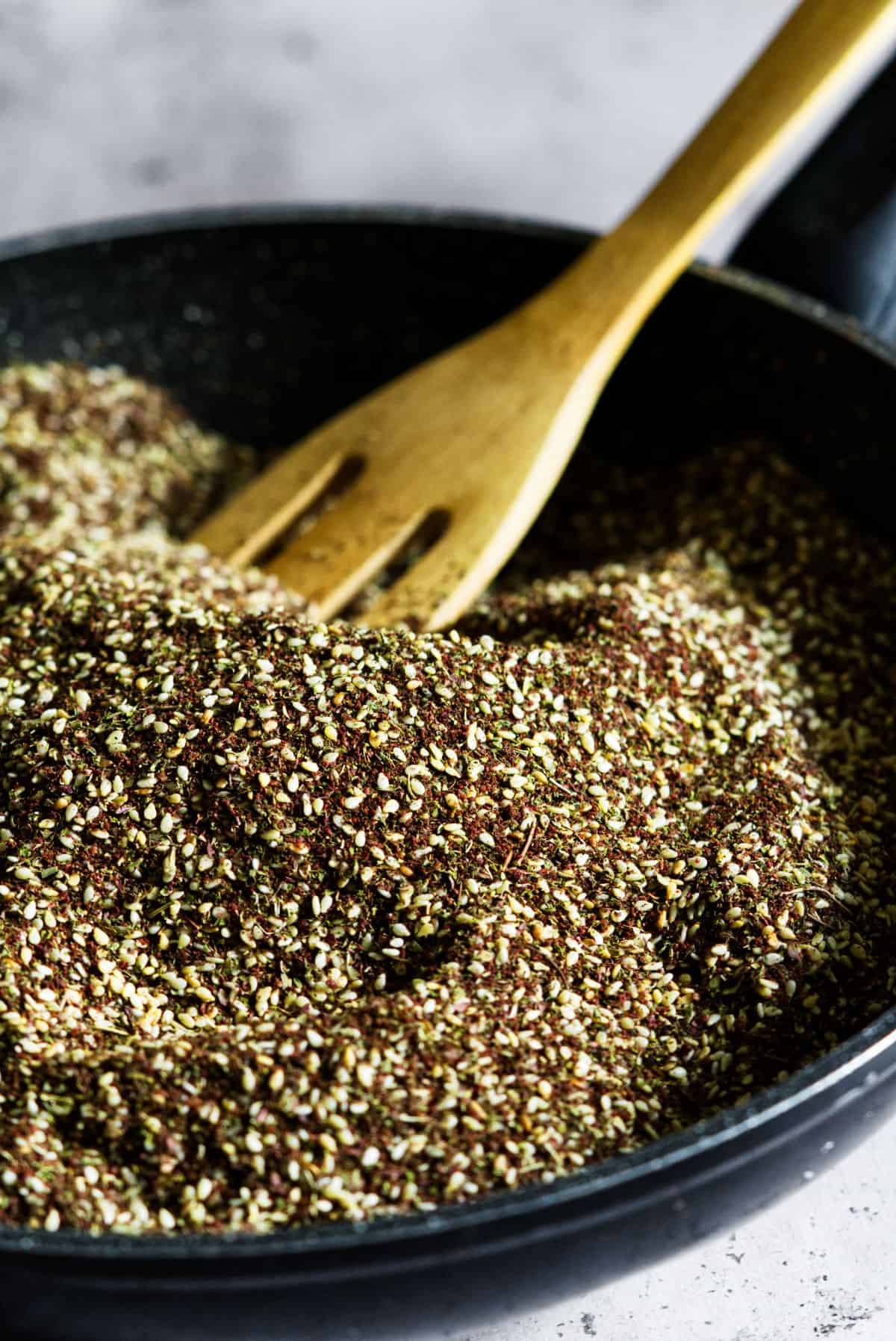
This website receives a commission/fee for each purchase bought through the affiliate links on this website.
Jump to:
What is Zaatar?
Zaatar is the Arabic word for wild thyme (hyssop) or it is also used (most commonly) to refer to a blend of herbs such as this recipe.
Zaatar across the Middle East will differ in blends, some will include spices. I have been fortunate to have tried many which are all lovely in their own right, but I keep coming back to the blend I grew up on.
Lebanese Zaatar is by far the most gorgeous herb blend. I just had to share my family’s recipe with you.
Zaatar in English
Zaatar in English is pronounced as “zaa·tahrr” The “r” in “tahr” syllable is rolled. It can be used interchangeably for the herb hyssop or the blend of herbs.
Why You’ll Love This
- Learn how to make zaatar from scratch - (starting by picking the herbs from the garden!) Even if you don’t have these herbs in your garden, you still can buy these easy ingredients from your local grocer in the spices & herbs section and mix them all up yourself.
- Mixing your own blend tastes so good and is by far more aromatic and fresher than buying a store-bought blend.
- It has so many uses for all meals of the day
- Naturally vegan and gluten-free. Also corn, soy, dairy and nut-free.
Serving Suggestions
Zaatar can be eaten in many ways, such as;
- I love making it into zaatar pastry - these are guaranteed to be gobbled up
- In a marinade or rub
- In manoush - this is the famous Lebanese herb pizza
- On toast for brekky - one of my go-to - you will need to blend it with olive oil beforehand to spread it out onto the bread (see below)
- Sprinkled in salads - I love it with a simple garden salad
- Try sprinkling it on popcorn for a savory treat
- Or have it blended in olive oil and serve with your favorite crusty bread.
- I use zaatar on a regular basis, it’s a fail-safe taste. I especially love it on roasted potatoes as a seasoning.
Here’s how to blend zaatar with EVOO (extra virgin olive oil).
- Always use extra virgin olive oil - you want the best tasting
- In a bowl, add zatar, EVOO and mix
- If the mixture is too runny, add more zatar
- If the mixture is too thick, add more olive oil
- You decide the amount that is right for you.
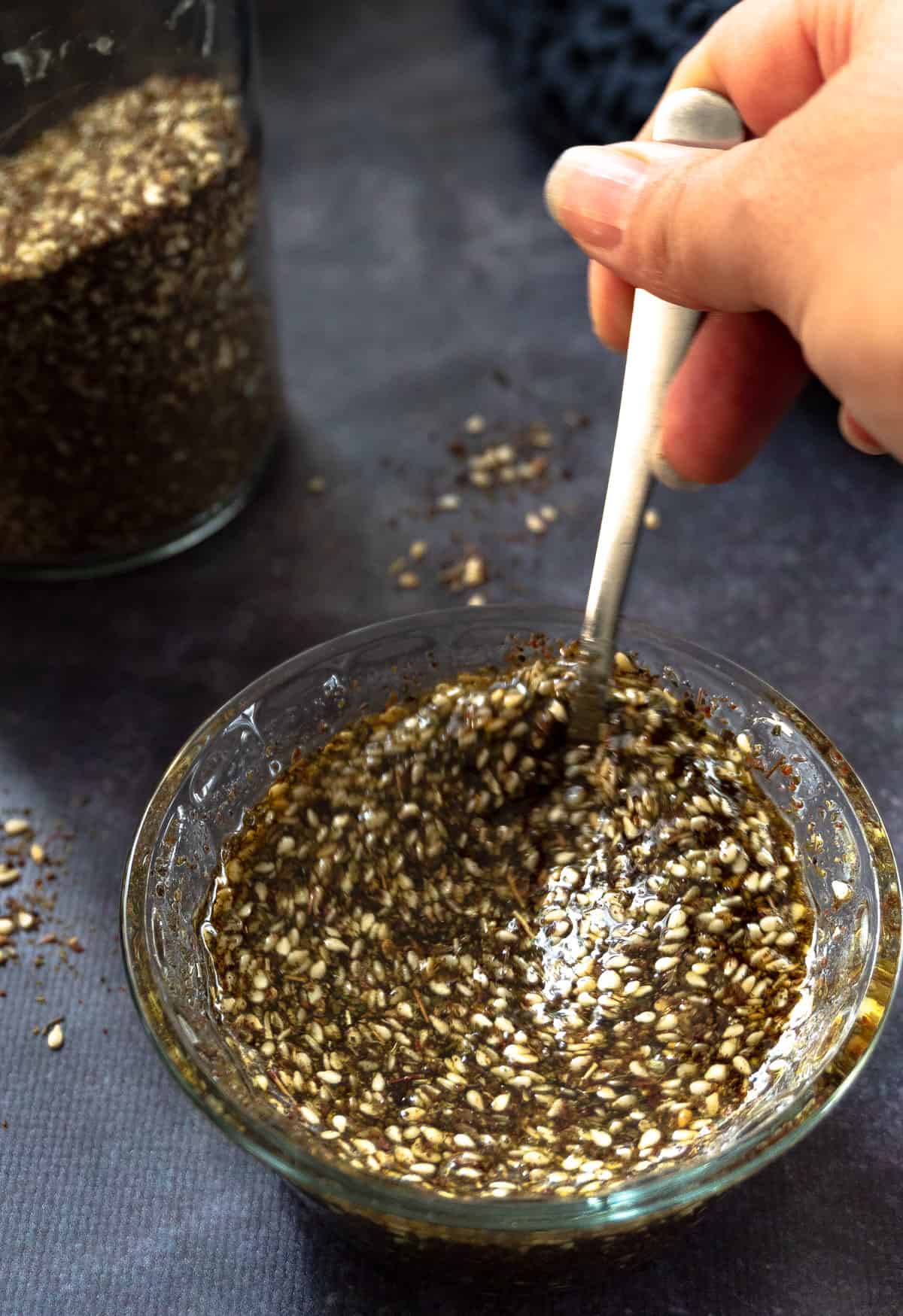
🌿Ingredients
Sesame seeds will be dry toasted in a pan (another recipe using sesame seeds is my addictive nut clusters)
Dried oregano which you can make from your garden, or as mentioned prior, you can use store-bought.
Two other scrumptious recipes using oregano include this Lebanese fresh oregano salad or this Lebanese oregano scrolls. Otherwise I recommend checking out this list of fresh oregano recipes.
Dried sumac can be found at your local Middle Eastern grocer.
I am aware some areas it's hard or impossible to find sumac at your grocer. In this case, you can buy it online, like this 100% ground sumac (affiliate link)
Salt enhances the flavoring of the herbs and seeds.
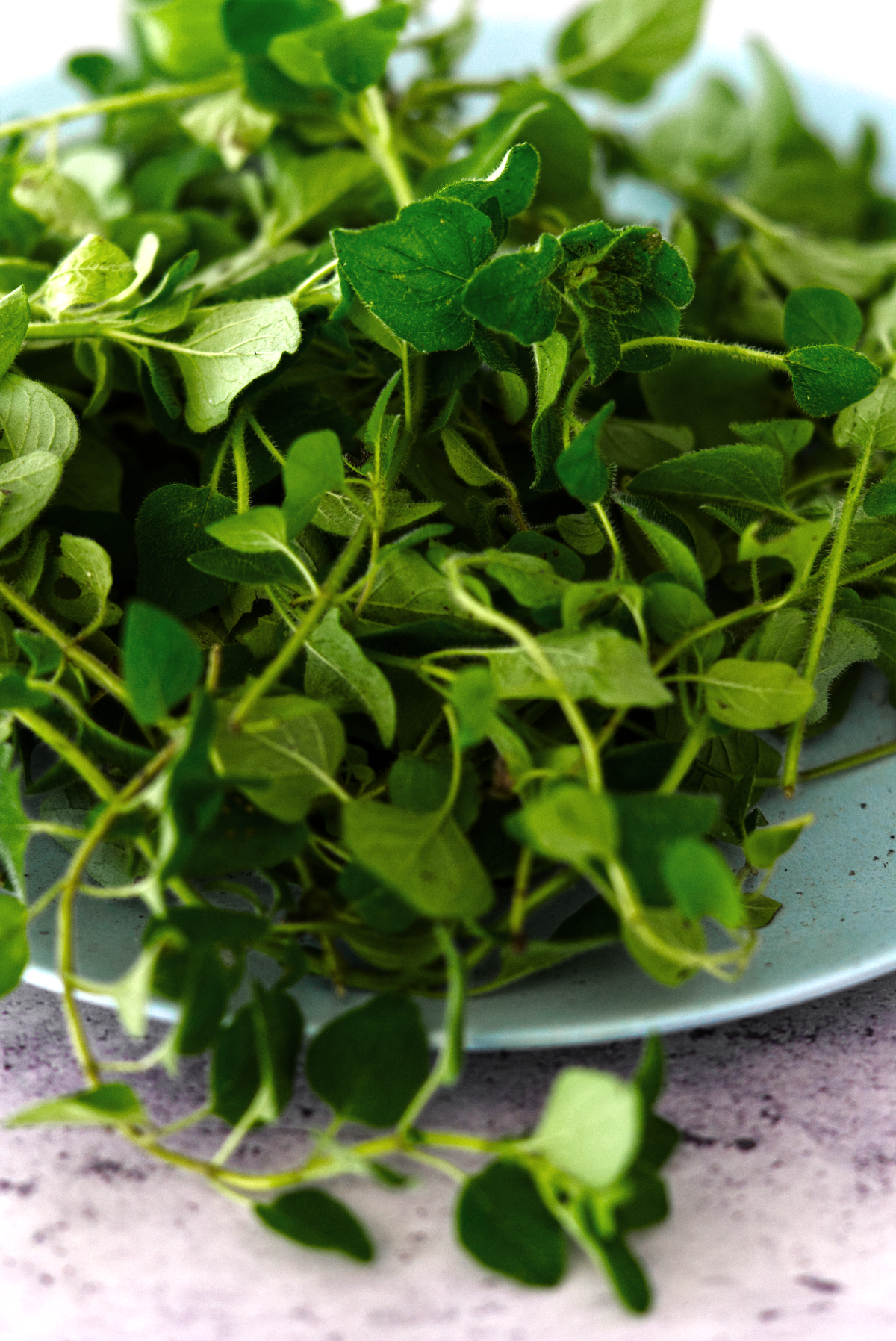
🔪How to Make Zaatar
From scratch using fresh oregano leaves
Step 1 - Pick oregano and separate leaves from stalks
Step 2 - Wash leaves thoroughly and spin dry, ensuring all dampness is gone
Step 3 - Place oregano leave into a breathable cloth bag and hang in the sun until completely dry. Drying oregano can take between 5-10 days depending on weather conditions
Using store-bought dried herbs
Step 4 - Over med-high heat, dry toast sesame seeds until golden
Step 5 - Add dried oregano, sumac, and 1.5 teaspoons of salt, and stir over heat for about 5-10 minutes until all is combined
Step 6 - Allow zaatar blend to completely cool down to room temp before storing in airtight jars to avoid condensation
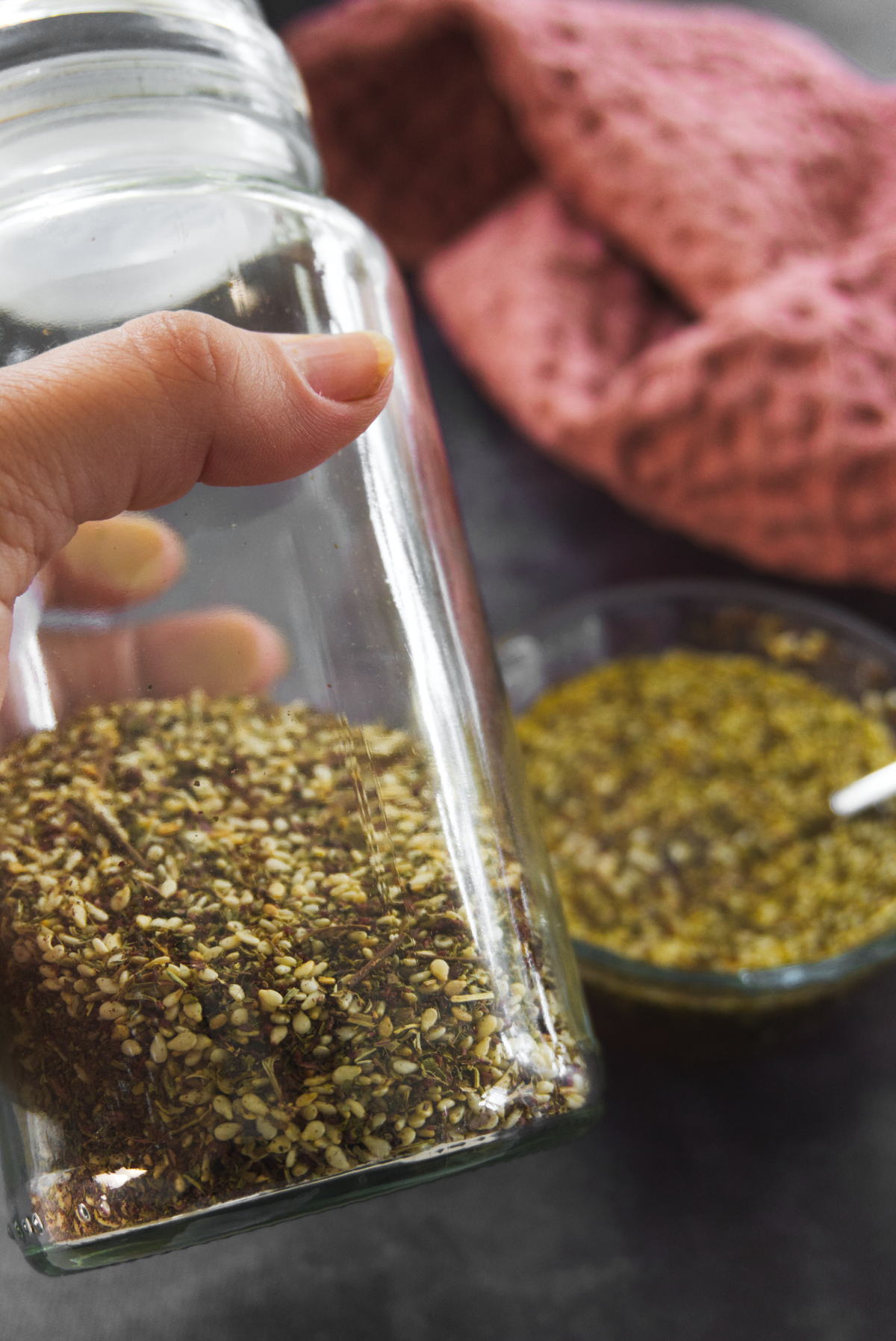
⭐Pro Tips
My mother uses an old basmati rice bag with a zipper to dry out her oregano in the sun, any calico or breathable bag will work, so long as it can be sealed
Store your homemade zaatar blend in your pantry for many months.
I always keep a ready-made jar blended with EVOO (extra virgin olive oil) in the pantry.
This way when I am in a rush or feel like some, I have it on hand which I can smear onto toast. Trust me Lebanese Zaatar on toast gets me salivating.
If you love a fresh hot herb beverage, steep the leftover oregano stalks in boiling hot water (add your preferred sweetener if needed)
If you prefer to buy a zaatar blend, try this one here (affiliate link) Whenever I am not able to make my own, I like the taste of this blend, and it’s proven to be of good quality using only ingredients I would use.
❓FAQ
Zaatar is a blend of dried herbs traditionally made with wild hyssop, due to availability and ease of use, oregano is commonly used to replace hyssop, which is then blended with sumac, thyme (not always) with toasted sesame seeds and a touch of salt. The dried herbs are in powder form.
Zaatar has a pleasant tangy, sour and nutty taste. It has a resemblance to lemon due to the sumac which is the sour component. The nutty flavor is from the toasted sesame. The flavors are slightly elevated when cooked.
Zaatar is the word for a family of herbs. Zaatar also refers to the plant ‘wild-thyme’ which is hyssop. It is more commonly used to refer to a blend of herbs.
Fresh oregano is a low-lying plant that grows small bright green almond-shaped leaves up to 3cm long, which are generally flat, soft, and fuzzy. The oregano plant will contain many stems which can grow very long if allowed.
There are a couple of close zaatar substitute for the herb blend. One is dukkah. Whilst not exactly the same it does normally contain more ingredients, a combination of herbs and spices) and crushed tree nuts, it can be used in a similar way to zaatar and also taste close it.
The other is a blend of marjoram, thyme and oregano.
The closest zaatar substitute for the herb plant of hyssop is oregano.
⚙️Equipment used
- Sieve, measuring bowl, measuring cups (affiliate link) - I like using the nested Joseph Joseph collection as it's a set of bowls, colander, sieve and measuring cups all in one and it packs away smartly and saves space.
- Nonstick Pan - no oil is used in this recipe to make the zaatar blend
- Food processor - for grinding the dried oregano (if making it from scratch)
We love to spread it in our bread and feast on other amazing dishes such as zucchini flesh lib el koussa or haytaliyeh, olives, fresh vegetables & fruit, ful madames and more.
Or try it as the seasoning on these gluten-free pita chips
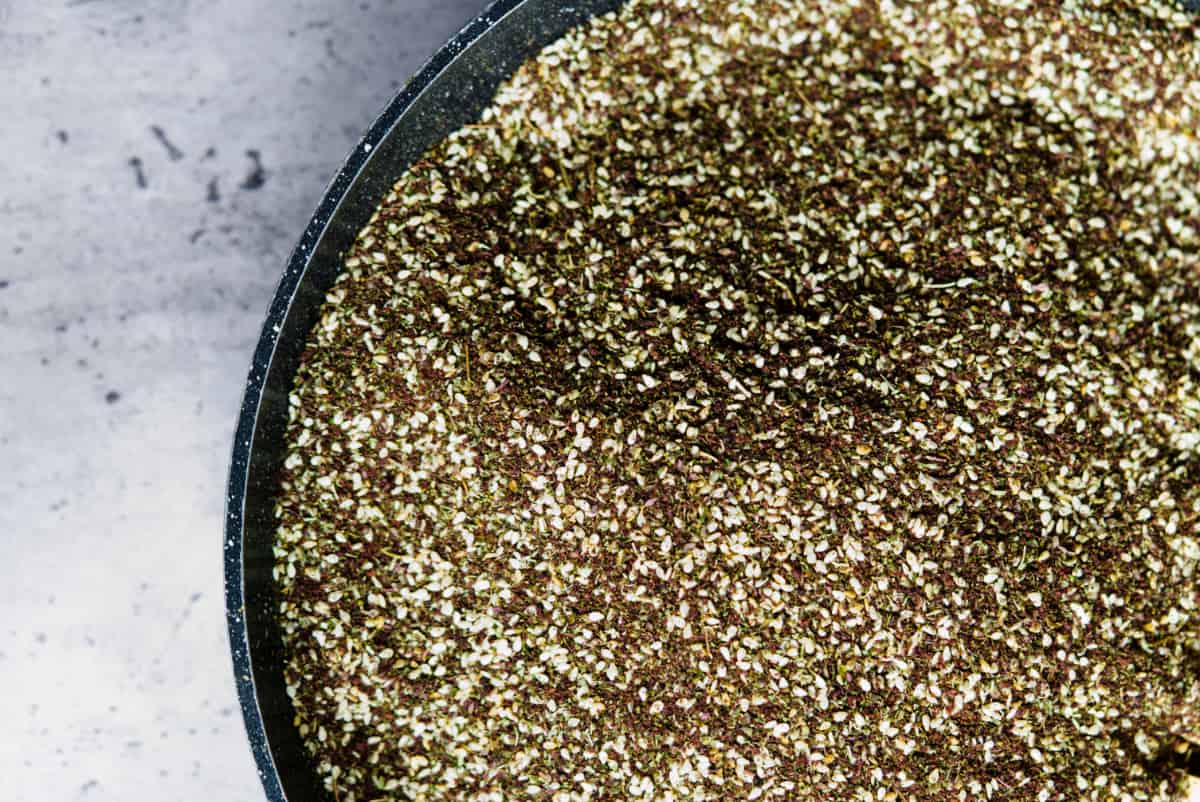
🥄Related Recipes
Did you enjoy learning how to make zaatar? I would love to hear from you, leave me a comment below and give me a ⭐⭐⭐⭐⭐ rating.
Alternatively, did you happen to take a photo of your food? Tag me @plantbasedfolk on Instagram to be featured via stories. If you love sharing your vegan food pics, join the PBF community group. If you’re into fast cooking vids, join me on Tiktok.
Recipe
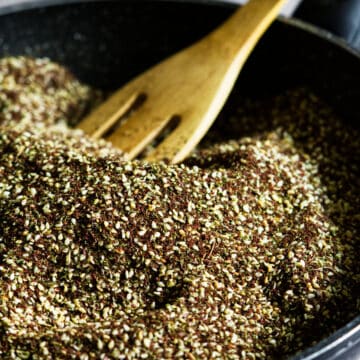
How to Make Zaatar (Lebanese)
Ingredients
- 2 cups Dried oregano
- 2 cups Sumac
- 2 cups Sesame seeds dry toasted
- 1 teaspoon Salt to taste
Instructions
If Using Fresh Oregano
- Pick oregano and separate leaves from stalks. Wash leaves thoroughly and spin dry, ensuring all dampness is gone
- Place oregano leaves into a breathable cloth bag and hang in the sun until completely dry - for several days.
If Blending Store Bought Herbs
- Over med-high heat, dry toast sesame seeds until golden2 cups Sesame seeds
- Add dried oregano, sumac and 1½ teaspoons of salt, stir over heat for about 5-10 minutes until all is combined.2 cups Dried oregano, 2 cups Sumac, 1 teaspoon Salt
- Allow zaatar blend to completely cool down to room temp before storing into airtight jars
Video
Notes
Nutrition
N.B., nutrition info is an estimate based on an online nutrition calculator. This will vary based on the specific ingredients you use.
If you enjoyed this recipe, consider supporting my work for the cost of a cup of coffee.

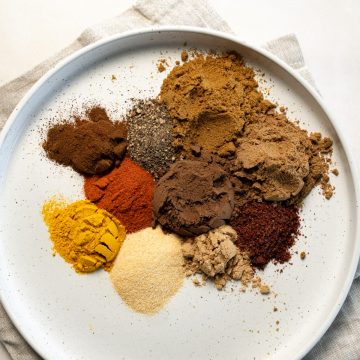
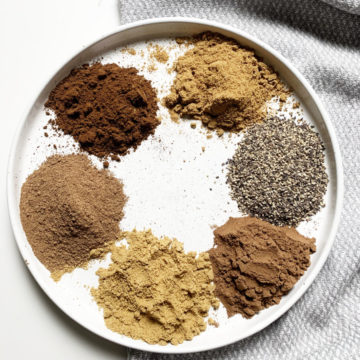
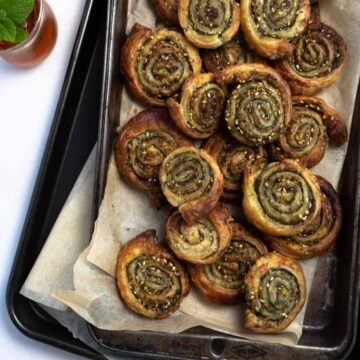
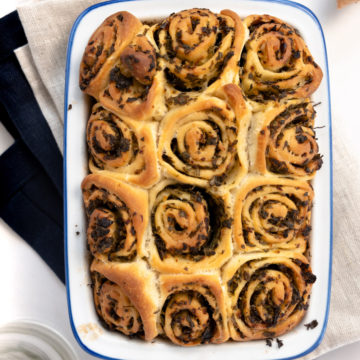

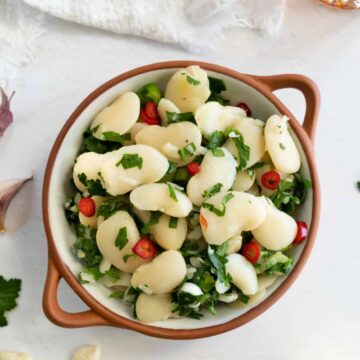
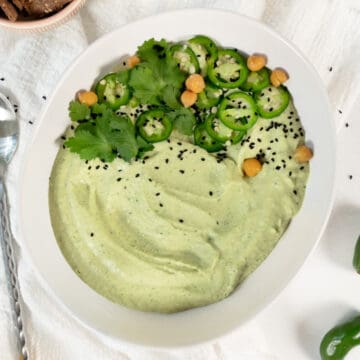
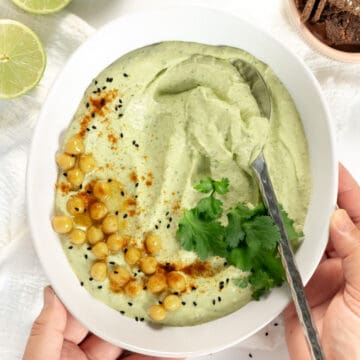
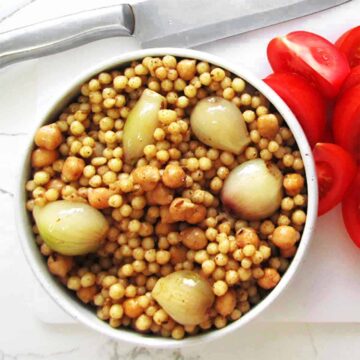
Lucy
This Lebanese Zaatar tastes so much better than store bought. Packed full of flavour and I love how many different dishes and foods you can use it with.
Addie
There is so much flavor in this dish! Yum!
Donna
So easy and so good. We had this sprinkled on top of some strained yogurt last night and paired with falafel and tabbouleh. So good!
Jean Nie
would love to try this spice on making breads, Im curious with the flavor it can give.
Kayla DiMaggio
This lebanese zaatar was so delicious! I loved how much flavor it had!
Georgina
Thanks so so so much for showing how you make zaatar. I grow a lot of oregano, this is now my go to recipe. Recommended
Martina
I just wanted to drop a note to say this is the only zaatar recipe I use now.
Fifi
Wow the flavor of this homemade zaatar is so much better than what I’ve had before. Thanks Janelle for sharing your family’s recipe. Thanks to your Mom, it was fun watching her cut the oregano in the video
Bonnie
I always thought it was zataar and not zaatar. Regardless, I’ve now got some in the pantry. Thank you for your vegan Lebanese recipes, I’m always looking for new foods to try. I’ve subscribed to your YouTube channel too.
fay
I also made this. My garden has plenty oregano. I gave my kids a jar each. We ate it every morning with bread. Thank you for sharing your family recipe. I highly Recommend.
plantbasedfolk
That makes me so happy!
I love how the whole enjoys zaatar!